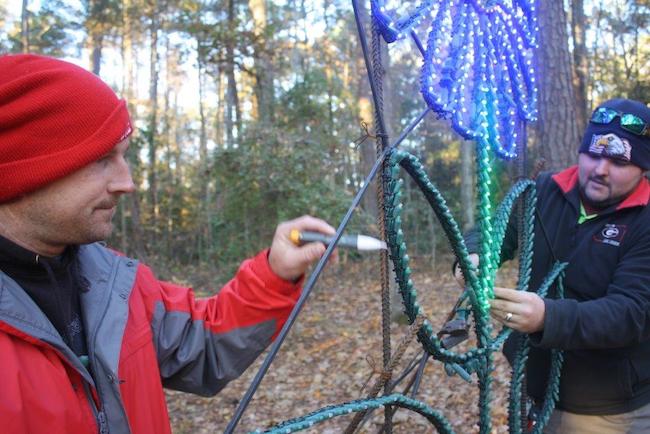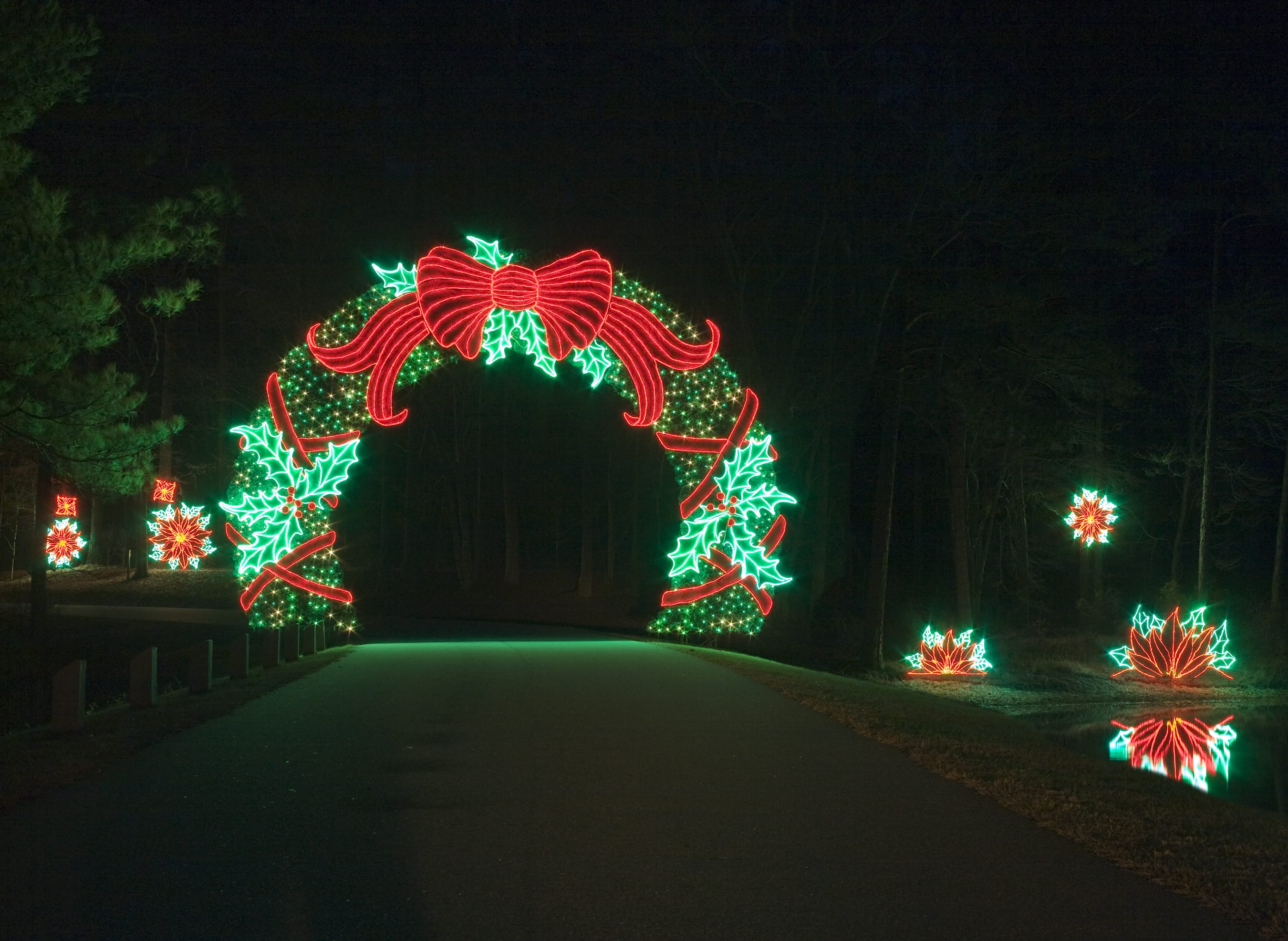Light spectaculars are as much a part of the holiday season as visits to see Santa at the mall. And while many cities have impressive displays, few can rival the sheer scope of the show put on at Callaway Gardens in Pine Mountain, Ga.
With 15 different scenes using somewhere between 8 million and 10 million bulbs over five miles, the “Fantasy in Lights” show has been recognized by National Geographic Traveler as one of the 10 best places in the world to see holiday lights.
But putting together an event of that caliber takes a lot of time — and even more work. Here’s a look at how the team of Santa’s Southern Helpers gets the show ready.
The Team
Chris Barber, operations manager for special events at Callaway Gardens, and his team of seven are responsible for setting up, maintaining and taking down the lights each year. The crew used to be a lot larger, but during the past 23 years the techs have gotten more efficient —thanks in part to modern equipment. LED lights, which make up 96 percent of the displays, don’t need to be replaced nearly as often as older mini bulbs.

Chris Barber, left, and Todd Haire
Unofficial team members include the drivers of the Jolly Trolleys, which offer people a non-driving way to view the displays. Drivers are equipped with a radio to report burned-out lights or other issues while the crowds are enjoying the display.
Job Responsibilities
Set up for the festival begins July 5th, as the team begins testing connectors and breakers and stocking up on necessary equipment. By the end of the month, they’re in the field, starting to run the hundreds of miles of cabling the show requires and setting up the hidden speakers that play the music.
“We start with speakers because they’re the least noticeable part,” says Barber. “We don’t want to have Christmas lights out in July.”
Up next comes installing the controls for animatronic displays and rebar supports for the frames, followed by the lights and displays themselves.
Surprisingly, very little problem detection takes place before that point.
“We do a little bit in the shop on the stuff we know is going to give us the most trouble. But for the most part, all the trouble shooting is done when it’s out there,” Barber says.
LED lights may be a lot more energy-efficient and last longer, but when it comes to maintenance, they can actually be kind of a pain in the neck. Before making the switch from mini lights, a problem with a line could be solved with a tool the team called a “zapper box,” which would send a pulse of electricity through the line, melting broken wires and restoring the string. With LEDs, they often have to replace the entire string.
Every night before the general public enjoys the display, an operations team member drives through “Fantasy in Lights” to look for new problems — often a result of falling tree limbs or squirrels, who chew through the wire to eat the copper.
Once the holidays are over, the team has to spend another 2.5 to 3 months deconstructing and storing the displays.
Tools of the Trade
The crew’s toolbox is a pretty standard one, filled with electrical tape, wire snippers and pliers. But there are a couple of unique tools:
- The light saber: Barber and crew use the “Star Wars” term to describe their voltage testers, which help them determine if a line has electricity running through it.
- Cherry pickers: Installing some of the arches, water displays and higher-up effects requires the use of a 60-foot boom elevating work platform.


Thanks for some other fantastic post. Where else could anybody get that kind of info in such an ideal manner of writing? I’ve a presentation subsequent week, and I’m at the search for such information.